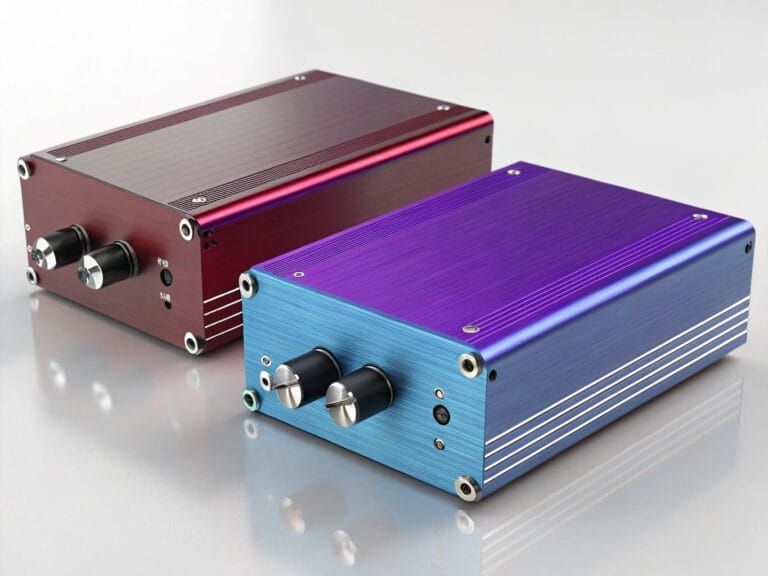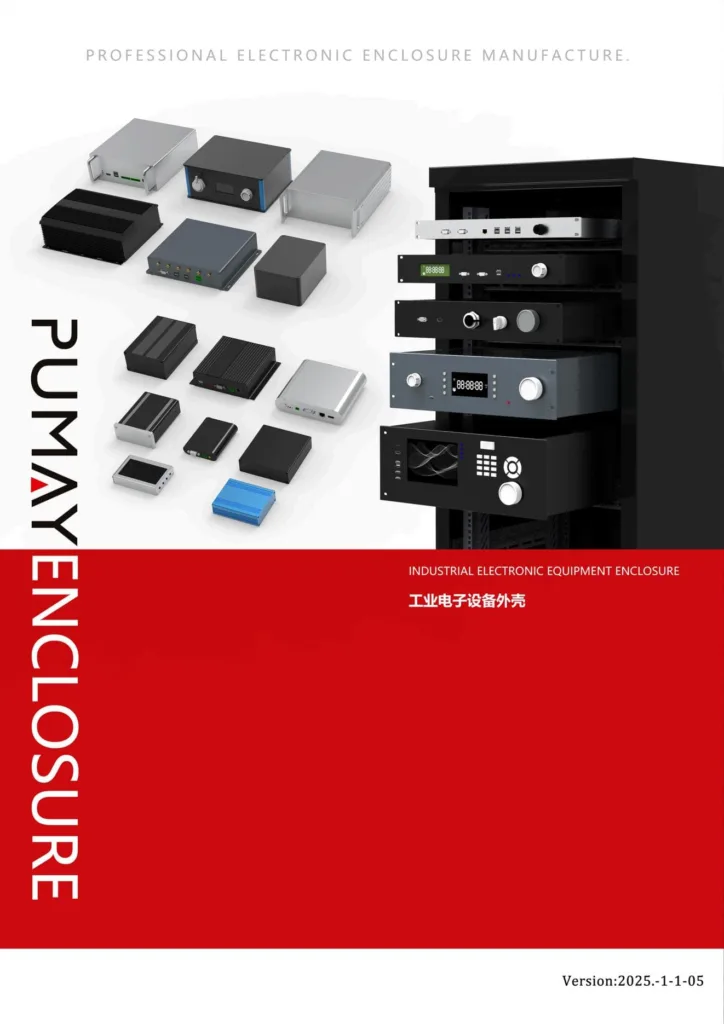Your high-performance electronics are failing in the field. An enclosure seems like just a box, but a poor design can cripple your device. Smart design is the key.
Aluminum enclosure design1 enhances performance through superior thermal management2, effective electromagnetic compatibility (EMC) shielding3, and robust structural integrity4. These elements work together to protect sensitive components from heat, interference, and physical damage, ensuring long-term reliability and peak operation.
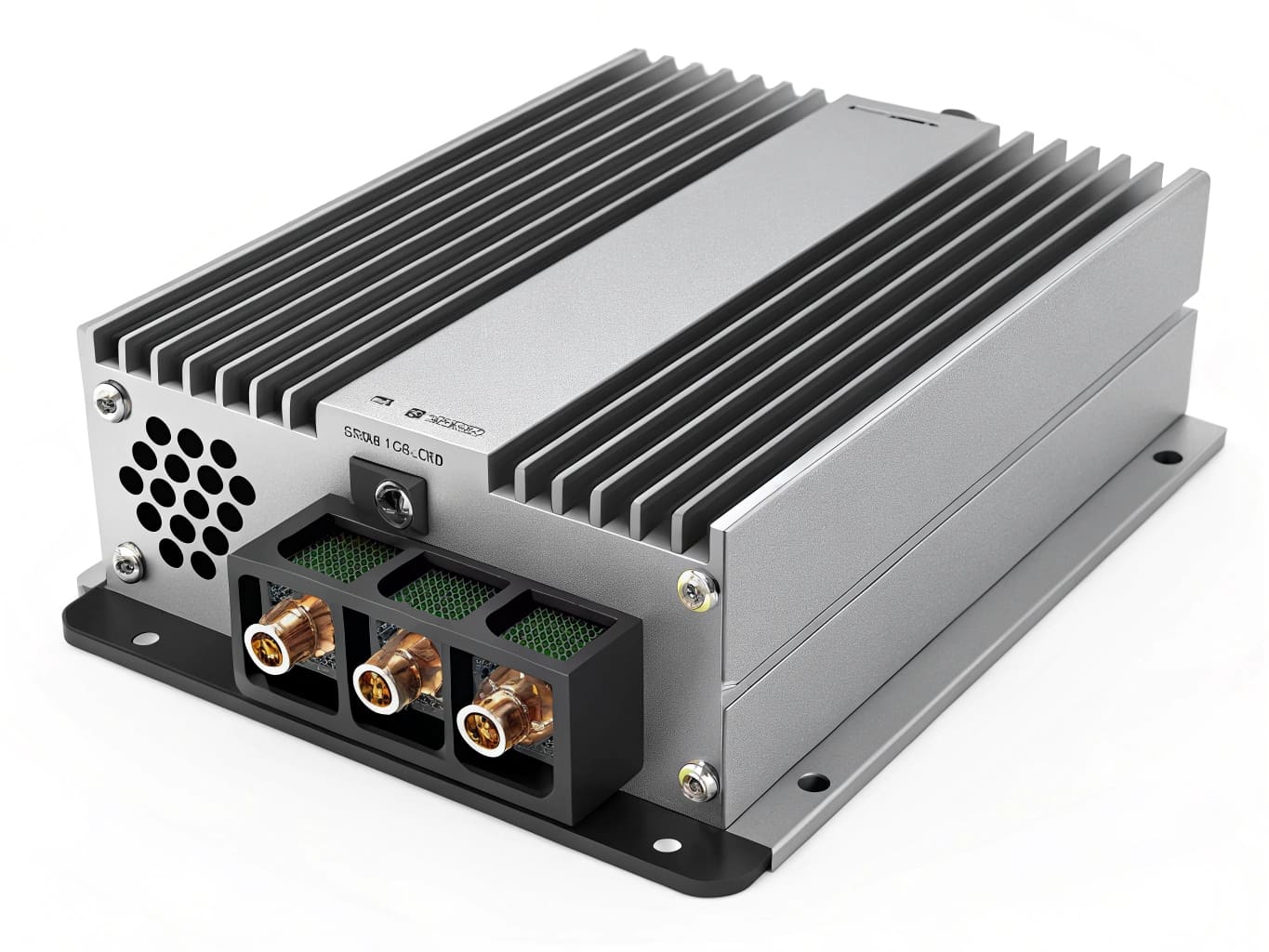 "High-Performance Aluminum Enclosure"
"High-Performance Aluminum Enclosure"
An enclosure is not just a passive container; it is an active component of your electronic system. I have spent more than a decade helping engineers move past the idea of the enclosure as an afterthought. Shifting your perspective and focusing on the enclosure design early in the process is one of the most effective ways to prevent costly failures down the road. It is the foundation upon which reliable, brand-worthy devices are built. Let's break down the three key areas where a great enclosure design can make all the difference.
How does thermal management2 in an aluminum enclosure impact performance?
Is your device constantly overheating? Trapped heat inside an enclosure can destroy sensitive components and cause performance throttling. Strategic thermal design in aluminum is the only way forward.
Proper thermal management2 prevents overheating, which maintains component efficiency and extends lifespan. By using aluminum's high thermal conductivity5 combined with integrated heatsinks6 and smart ventilation, you can dissipate heat effectively. This ensures your device operates at peak performance without thermal failure.
 "Thermal Management in Aluminum Enclosure"
"Thermal Management in Aluminum Enclosure"
I often see engineers, like a recent client Jeff, struggling to fit powerful components into compact spaces7. The heat they generate becomes a major problem. Aluminum is a fantastic starting point because it conducts heat so well, but the material alone is not a complete solution. How you shape and use that aluminum is what truly matters. We worked with Jeff to design an enclosure where the extrusion profile itself had heatsink fins built right in. This passive cooling8 solution was elegant, cost-effective, and perfectly suited to his needs, moving heat away from the processor without needing a fan.
Cooling Strategies
| Cooling Type | How It Works | Best For |
|---|---|---|
| Passive Cooling | Uses conduction (heatsinks6) and natural convection (vents) to move heat. No moving parts. | Low to moderate heat loads. Applications requiring silence and high reliability. |
| Active Cooling | Uses fans or other powered devices to force airflow over components. | High heat loads where passive methods are insufficient. Densely packed electronics. |
Thinking about the path heat will take is critical. You must consider both conduction (how heat moves through the aluminum) and convection (how heat transfers to the air). A well-designed enclosure manages this entire process, guiding heat from its source on the PCB, through the metal, and out into the environment.
How does enclosure design affect electromagnetic compatibility (EMC)?
Is your device failing certification tests because of signal interference? Uncontrolled electromagnetic noise can ruin your product's reliability and block its path to market. Your enclosure is your first line of defense.
A well-designed aluminum enclosure acts as a Faraday cage9, shielding sensitive components from external electromagnetic interference (EMI) and containing internal emissions. This is achieved by using a conductive material10, ensuring tight seams between panels, and providing proper grounding points11.
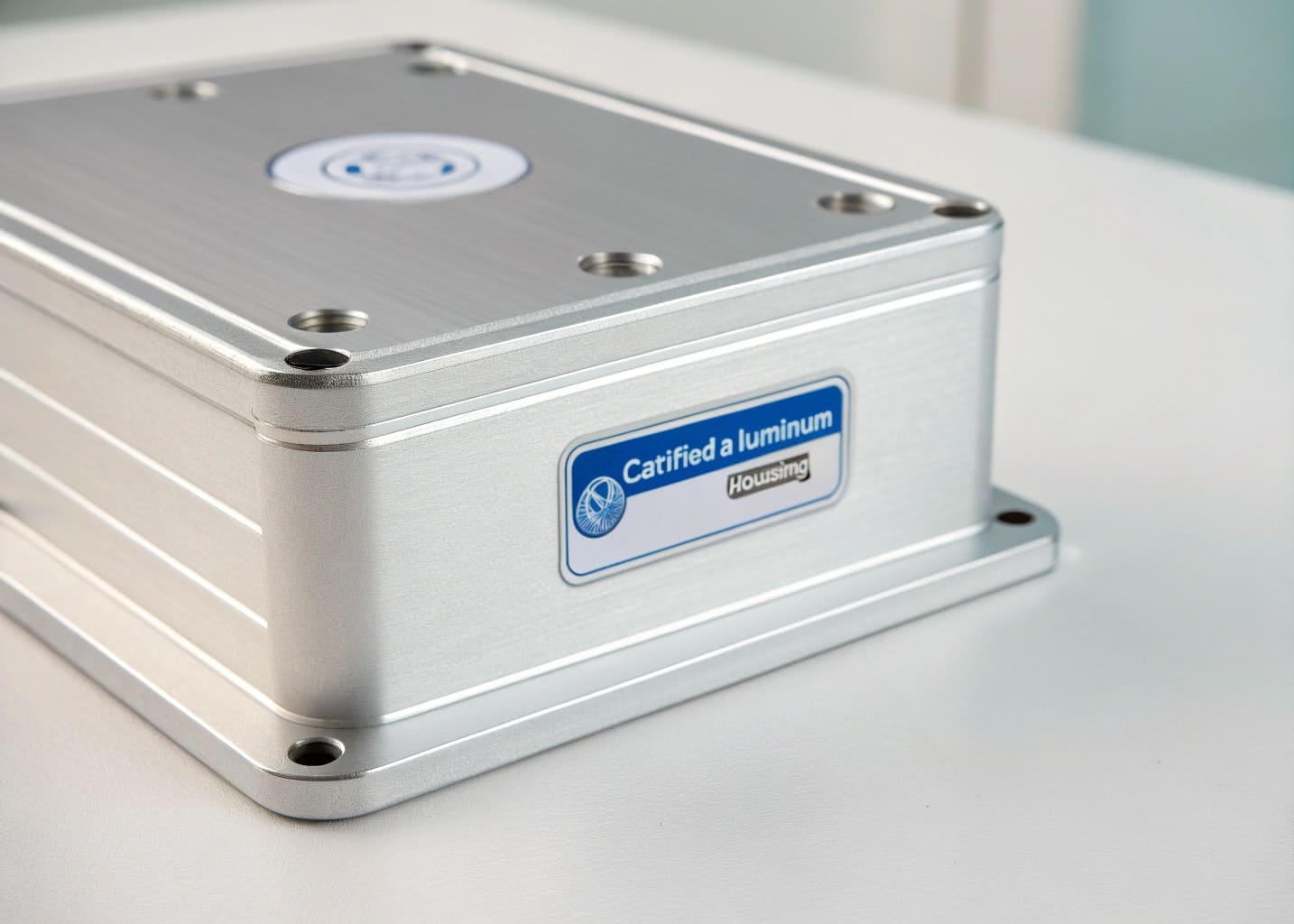 "EMC Shielding with Aluminum Enclosure"
"EMC Shielding with Aluminum Enclosure"
Failing an EMC test is a product developer's nightmare. It means expensive re-testing and significant delays. I have seen the panic it causes firsthand. The root cause is often gaps or openings in the enclosure that allow electromagnetic energy to leak in or out. Think of it like soundproofing a room; any small crack will let noise through. With EMC, those "cracks" are often the seams between the main body and the end plates. This is why sourcing from multiple vendors can be risky—tolerance mismatch creates gaps. By manufacturing the entire case under one roof, we ensure a precise, tight fit that minimizes these leaks and gives your product the best chance of passing EMC tests on the first try.
Common Leakage Points and Fixes
| Leakage Point | The Problem | The Solution |
|---|---|---|
| Panel Seams | Gaps between the main body and end plates allow EMI to pass through. | Ensure high-precision machining for tight fits. Use conductive gaskets to fill any remaining gaps. |
| Cutouts & Ports | Openings for cables and connectors are necessary but create paths for EMI. | Use shielded connectors and cables. Keep openings as small as functionally possible. |
| Poor Grounding | Without a solid ground path, the enclosure cannot effectively dissipate interference. | Integrate grounding screws or posts into the design. Ensure all metal parts have electrical continuity. |
Why is structural integrity4 crucial for long-term reliability?
Are field failures from drops and vibration hurting your brand's reputation? A flimsy case offers no protection against real-world conditions. A robust enclosure is the foundation of a reliable product.
Structural integrity is crucial because it protects internal electronics from shock, vibration, and impact. A strong, well-sealed enclosure also maintains its IP rating12 over time, preventing dust and water from causing corrosion and short circuits, which ensures consistent, long-term performance in harsh environments.
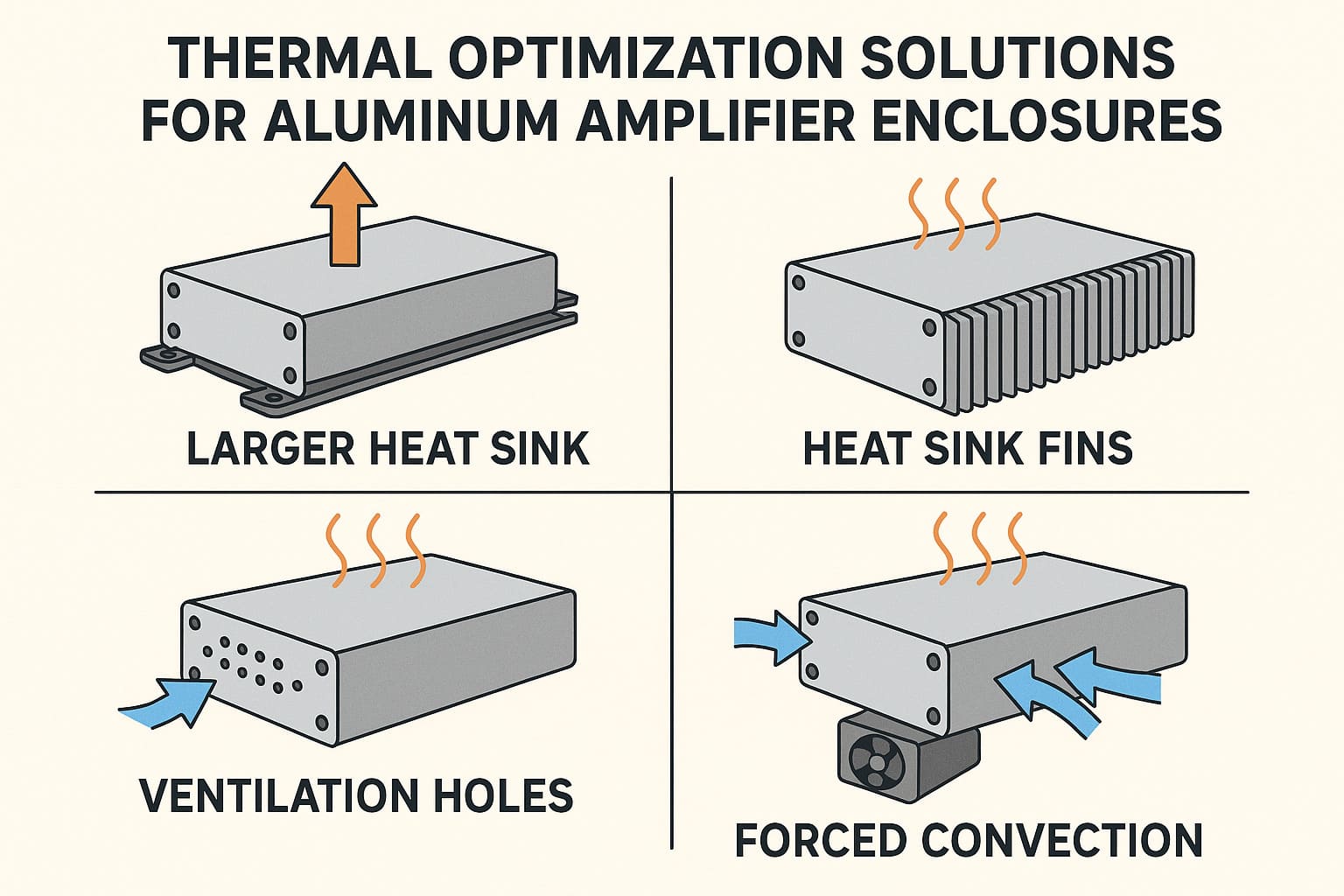 "Rugged Aluminum Enclosure for Reliability"
"Rugged Aluminum Enclosure for Reliability"
A product engineer's biggest challenge is often balancing competing requirements. Jeff, for instance, needed an enclosure for a field instrument that was both lightweight for portability and sealed to IP67 for outdoor use. Steel is strong but heavy. Plastic is light but can feel cheap and may not provide enough protection or sealing. This is where extruded aluminum is the perfect middle ground. The extrusion process allows us to design complex, ribbed profiles that are incredibly strong and rigid for their weight. This inherent strength means the enclosure will not twist or flex under stress, which is critical for maintaining the tight seal of the gaskets that provide IP-rated protection against water and dust.
Understanding IP Ratings
| IP Rating | Solids Protection | Liquids Protection | Typical Use Case |
|---|---|---|---|
| IP65 | Dust Tight | Protected against water jets from any direction. | Indoor industrial settings with washdowns. |
| IP67 | Dust Tight | Protected against temporary immersion in water (up to 1m for 30 mins). | Outdoor equipment that may be exposed to rain or temporary flooding. |
| IP68 | Dust Tight | Protected against continuous immersion in water under specified conditions. | Submersible sensors and marine equipment. |
When we provide an IP67-validated design, we are not just selling a box; we are giving our clients confidence. They know the enclosure will protect their valuable electronics, and they save the time and expense of conducting those environmental tests themselves.
Conclusion
Your enclosure is not just a box; it's a critical performance component. Getting the thermal, EMC, and structural design right ensures your product's success and reliability in the field.
Explore how aluminum enclosure design can enhance performance and reliability in electronic devices. ↩
Learn about the importance of thermal management in preventing overheating and ensuring device longevity. ↩ ↩ ↩
Discover how EMC shielding protects devices from interference and enhances reliability. ↩
Understand how structural integrity contributes to the durability and reliability of electronic devices. ↩ ↩
Find out which materials are best for thermal management in electronic enclosures. ↩
Learn how heatsinks can effectively dissipate heat and enhance device performance. ↩ ↩
Learn about the unique challenges and solutions for fitting powerful components in small enclosures. ↩
Explore the benefits of passive cooling solutions for maintaining optimal device temperatures. ↩
Discover the principles of a Faraday cage and its role in protecting electronics from EMI. ↩
Explore the various conductive materials that enhance EMI shielding in enclosures. ↩
Discover the critical role of grounding points in ensuring effective EMI shielding. ↩
Understand the significance of IP ratings in ensuring protection against dust and water. ↩

